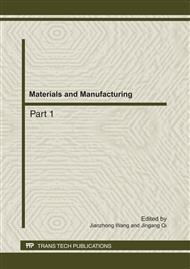p.751
p.755
p.759
p.764
p.770
p.774
p.778
p.785
p.789
Research on Mixture Design and Mechanical Performance of Porous Asphalt Concrete in Cold Regions
Abstract:
Porous asphalt pavement (PAC) is constructed with an open-graded porous mixture with 15–25% designed air void and 4–5 cm surface thickness. This paper presents paving material selection and requirements of porous asphalt concrete in the cold regions. Through a series of laboratory tests, optimum gradation of the aggregates and bitumen content (BC) were selected, which met all aspects of performance indexes. Uniform experiment design methods, including Marshall test, immersion Marshall test and Freezing–thaw indirect tensile test, were applied to analyze road performance of PAC, such as temperature stability, water stability, resistance to Freezing and thawing and so on. The results confirmed that PAC studied is an effective pavement surfacing materials in cold climate regions.
Info:
Periodical:
Pages:
770-773
Citation:
Online since:
July 2011
Authors:
Price:
Сopyright:
© 2011 Trans Tech Publications Ltd. All Rights Reserved
Share:
Citation:


